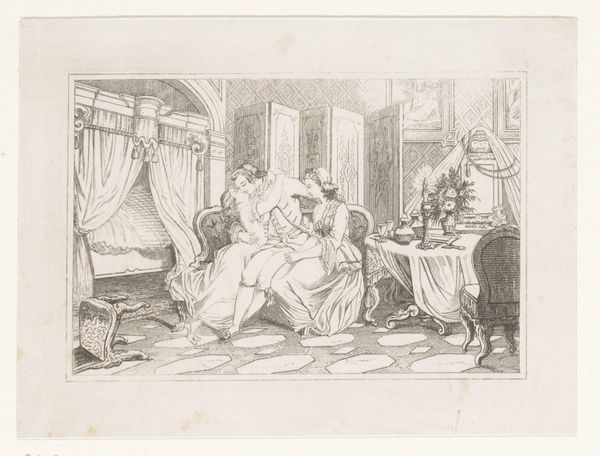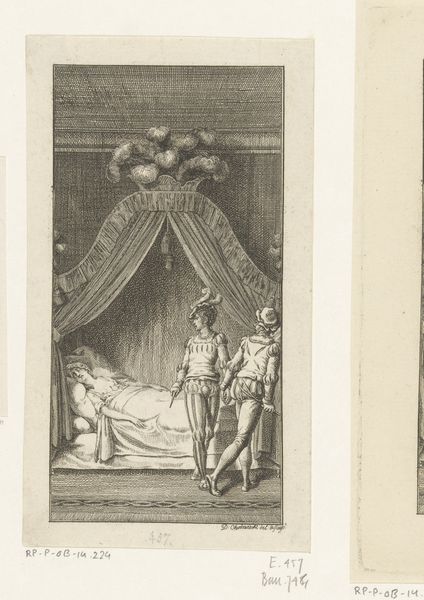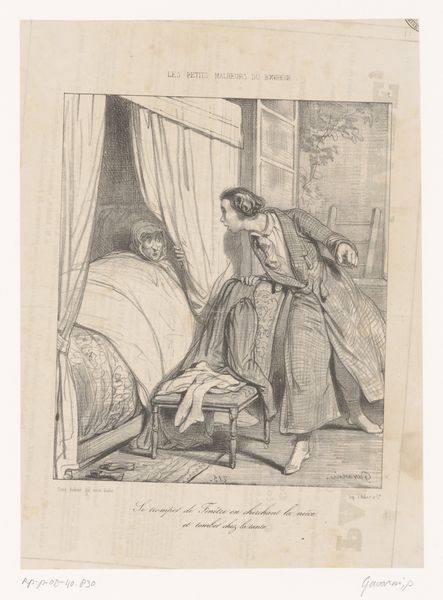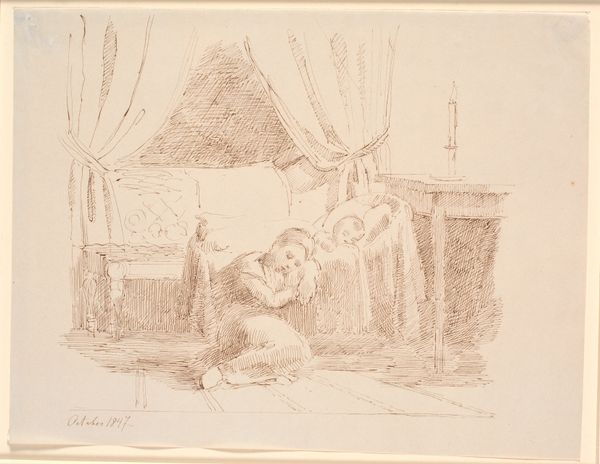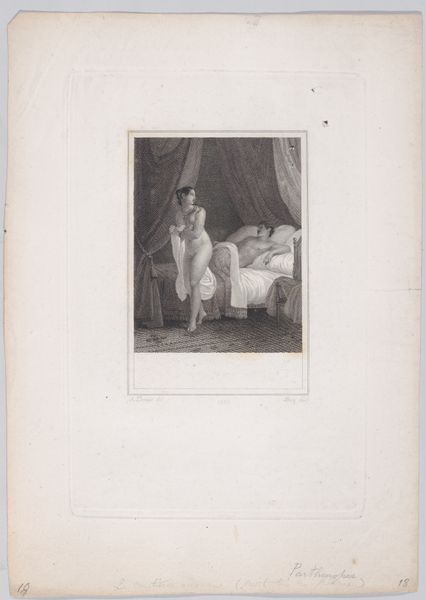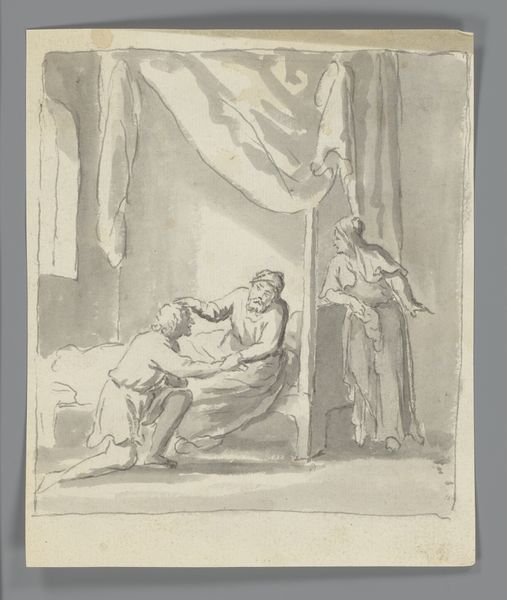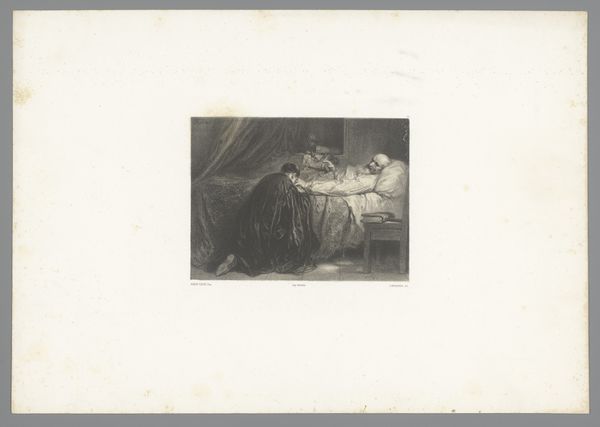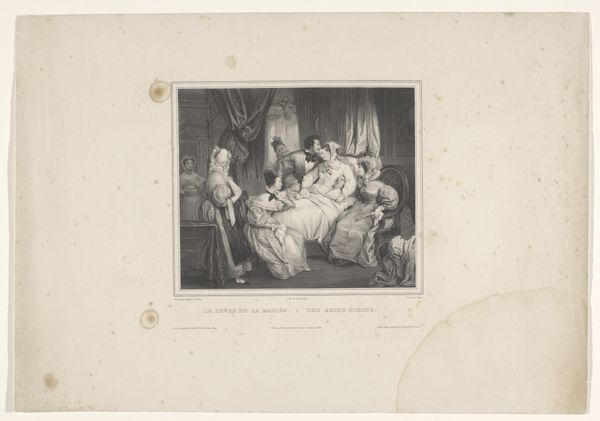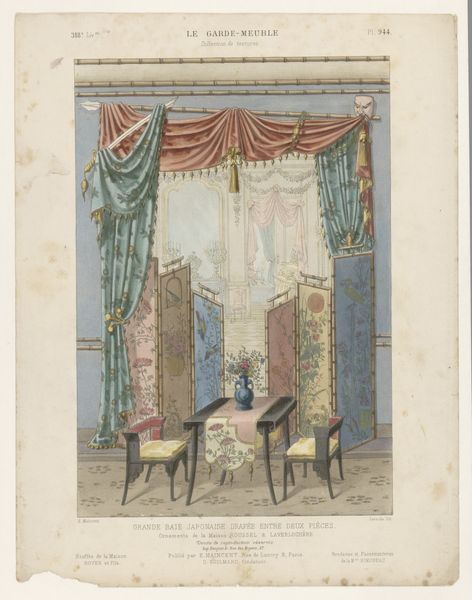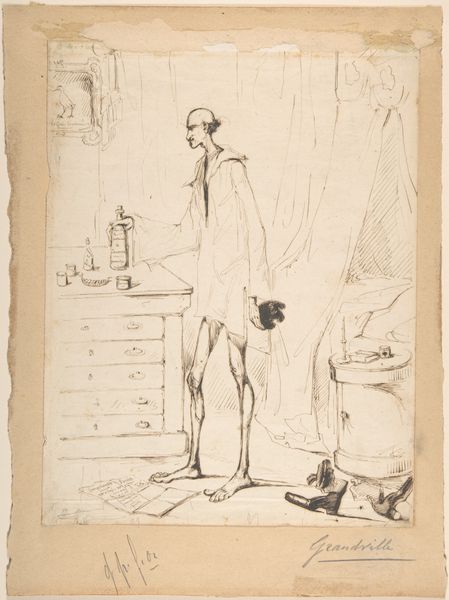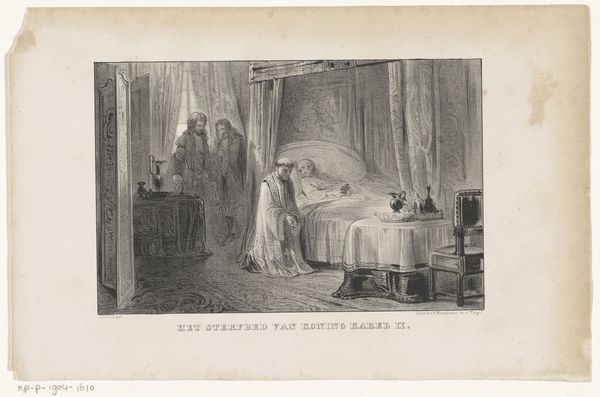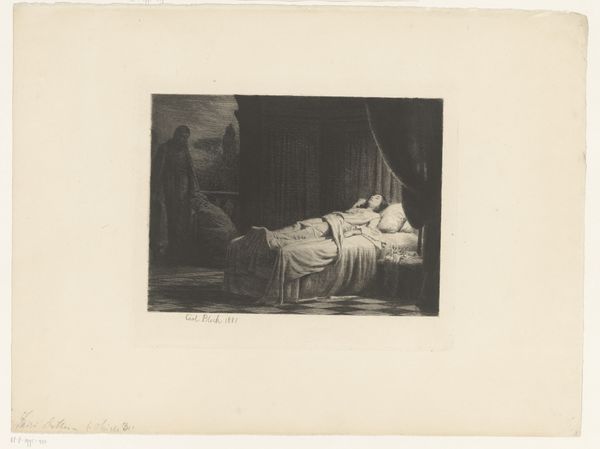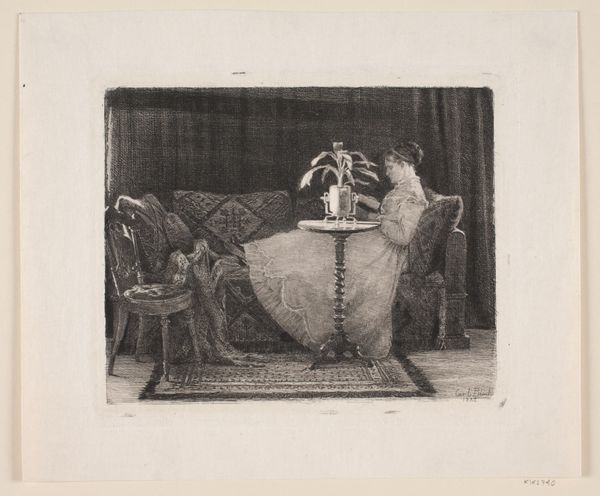
drawing, print, pencil, architecture
#
drawing
#
neoclacissism
# print
#
romanticism
#
pencil
#
architecture
Dimensions: 14 x 18 7/8 in. (35.6 x 47.9 cm)
Copyright: Public Domain
Curator: Let’s discuss this interesting 19th-century drawing titled "Design for a Bedroom" by Henri Perron, housed here at the Met. What's your immediate take? Editor: Bleak opulence. The draped fabric is so fussy, but the stark, gray pencil lines lend a cold atmosphere. It’s not inviting at all. It looks like an austere space. Curator: Indeed. Neoclassicism, flavored by romanticism, was all about setting a specific tone. Perron gives us insight into the desired aesthetic of the time, how bedroom space, normally seen as private and informal, could project an aura of cultivated taste. It speaks to social class and status through interior design. Editor: And what work went into creating that kind of status! Just look at the detail in the drapery, the ornate carvings… These weren’t mass-produced, cheap goods. There's considerable labor embedded in every aspect of this design, pointing to intense artisanal skill and specialized manufacturing. How available were such interiors and decorative pieces at the time? Curator: This level of décor would have been exclusive to the upper echelons of society. We can interpret such works as promoting ideals and values of that societal level and demonstrating clear differences among social and economic levels. It showcases the power dynamics inherent in accessing luxury and good taste. Editor: So, this drawing acts as a sort of… aspirational propaganda? For the upwardly mobile, perhaps, showing what success looks like? But beyond the socio-economic implications, there's the question of functionality. I mean, all those fussy layers on the bed--how comfortable, practical, or sanitary could this possibly be? Curator: Utility was not always the foremost concern. These spaces were constructed with an eye toward influencing the guest. The arrangement projects a certain lifestyle. It is supposed to evoke feelings of the occupant's wealth, artistry, and overall elevated sensibility. Editor: That feels right. I'm thinking of the work behind manufacturing such social constructs-- literally fabricating it into physical form, as seen here through drawings. It makes you reflect on the relationship between power, artistry, labor, and the shaping of cultural aspirations. Curator: I agree. Considering that is valuable, and viewing Perron's drawing, with the knowledge that it was accessible for the world and constructed during the 19th century, deepens our awareness of class and social differences that endure to this day.
Comments
No comments
Be the first to comment and join the conversation on the ultimate creative platform.
